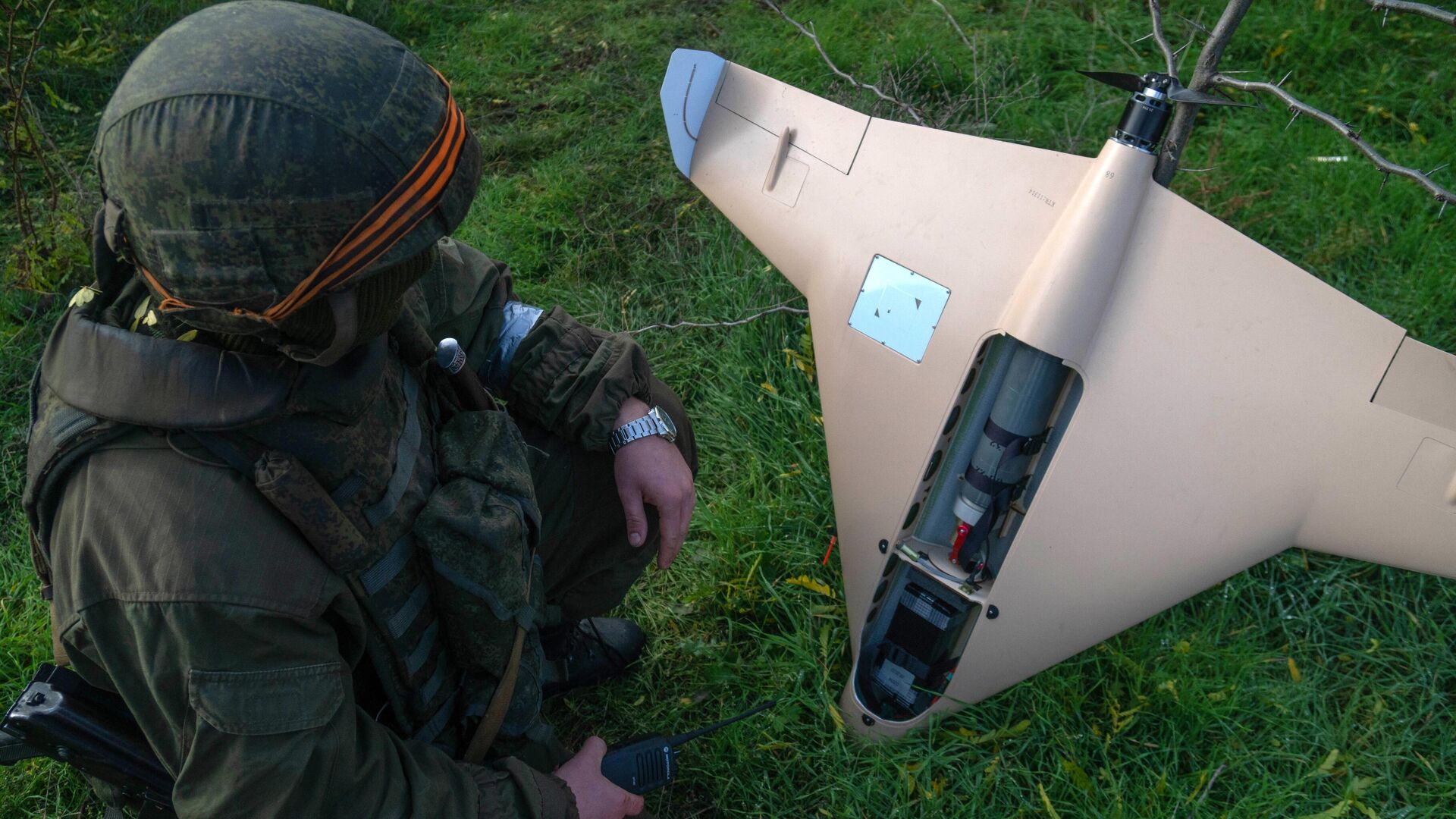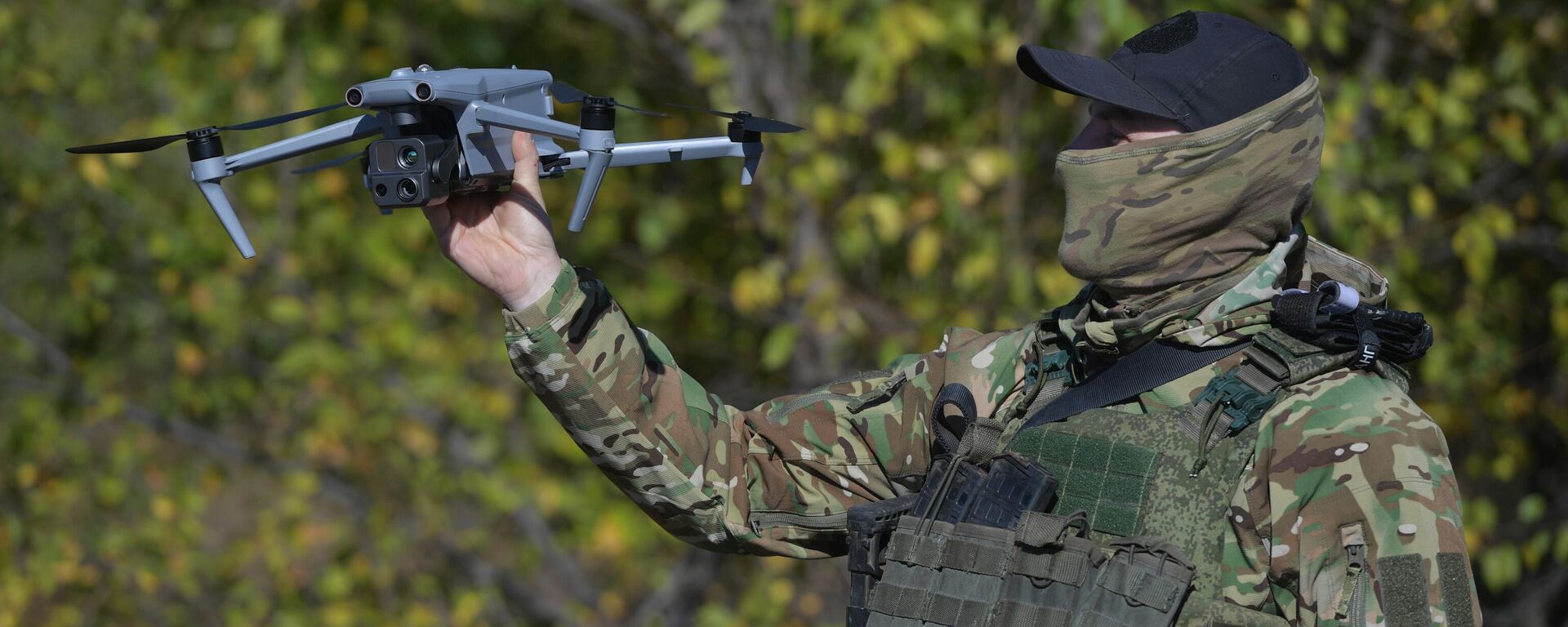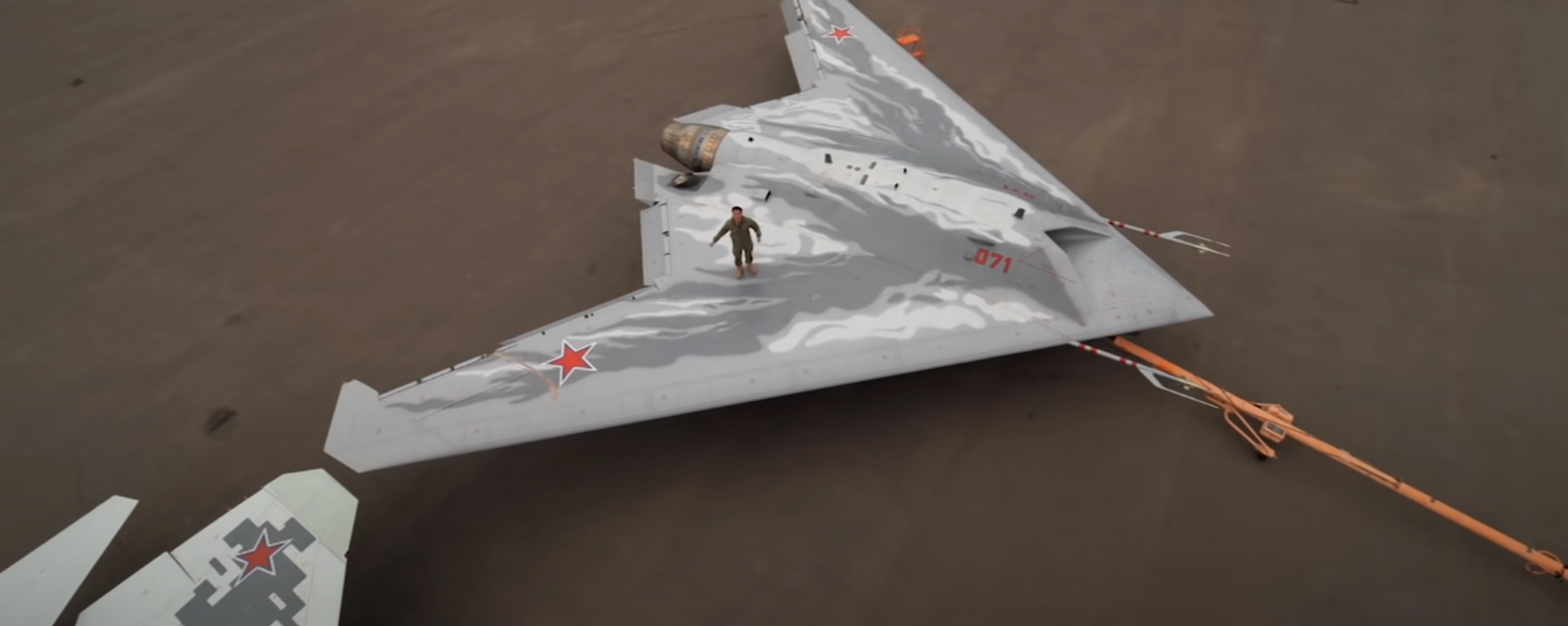Why is Kalashnikov's Zala Kub Drone a 'Nightmare' for Ukrainian Military?

© Sputnik / Ivan Rodionov
/ Subscribe
A newly upgraded Russian drone will amplify the Ukrainian military's headaches, warns the US mainstream media about Kalashnikov Concern's new Zala Kub.
The Zala Kyb-UAV, also known as Kub-BLA ("Cube"), is an unmanned combat aerial system developed by Russian defense company Zala Aero, a subsidiary of Kalashnikov Group.
The silent delta-winged device can deliver a variety of weapon payloads with high precision and may be used as a kamikaze drone or an intelligence, surveillance and reconnaissance (ISR) system. What's more, the Kub has undergone upgrades making it "a powerful new tool in launching airstrikes against Ukraine," Newsweek reported.
"About a year ago, the West wrote all sorts of articles which said that Russia was losing to Western countries in terms of drones and would never catch up with them," Alexei Leonkov, a military analyst and editor of Arsenal Otechestva (Arsenal of the Fatherland), told Sputnik. "For its part, the West supplied 23,000 drones to Ukraine just last year, most of which [Russians] have already shot down. These [drones] do not reach the target thanks to the action of our electronic warfare systems. Russian-made drones like Kubs and Lancets have caught the West off guard."

Launch of drones of the Russian Armed Forces in the Nikolaevo-Krivoy Rog direction
© Sputnik / Ivan Rodionov
/ What is the Zala Kub Drone?
The Kub was first presented in February 2019 at the International Defence Exhibition (IDEX), held in Abu Dhabi. The loitering munition has a wingspan of 1.21 meters; it is is 0.95 meters long and 0.165 meters high. It can travel at speeds from 80km/h to 130km/h.
Launched from a catapult, the Kub can carry a maximum payload of 3 kilograms and stay in the air for 30 minutes, reaching the targets located at a distance of over 40 kilometers. The unmanned aerial vehicle (UAV) attacks the target on a vertical trajectory, with precision guidance.
"Now the Kub will be upgraded," Leonkov said. "That is, they will probably boost the warhead. Most likely, they will add a night vision camera to it so that it can attack contrasting targets. This will be especially instrumental now, in the winter, when all equipment, in order to prevent it from freezing, will have to warm up the engines, and, of course, they will glow on the underlying surface like a Christmas tree."

Launch of drones of the Russian Armed Forces in the Nikolaevo-Krivoy Rog direction
© Sputnik / Ivan Rodionov
/ The Kub moves swiftly and silently on approach to the target, making attempts to shoot it down futile, according to the military expert.
"Therefore, the Kub managed to destroy various targets including the famous 'three sevens' [The M777 howitzer – Sputnik], and other equipment, and even enemy air defense equipment," Leonkov continued. "[Ukraine's] air defenses could not cope with this drone. It is clear that the enemy, of course, is trying to adapt and, perhaps, has found something as an antidote to the previous version of the Kub. So, the developers went ahead and improved it to ensure it remains an effective tool on the battlefield."
Why Russia's UAVs are Thorn in the West's Side
Russia has stepped up the production of various types of UAVs since the beginning of the special military operation in Ukraine. The Ukrainian conflict has already been called a revolution of drone warfare.
Previously, Zala's Lancet as well as its upgraded version stole the Western media headlines due to its unique characteristics and efficiency. Zala's Kub has also attracted the attention of Western military observers, as Russian arms designers constantly improve their weapons.
"The enemy was surprised that, for example, the Lancet's new "Izdeliye-53" version flies to larger distances and hits aircraft at airfields, while its foreign analogues cannot boast such combat successes. That is, their drones do not reach their targets [many of them] are routinely shot down. On the other hand, despite the fact that NATO has supplied Ukraine with a lot of stations, which are supposed to see our drones, detect them, attack them, these stations do not prove effective," the military expert noted.
"There was an interesting research analysis of 900 Lancet drones. Their performance is very high, and they showed both effectiveness and destruction of equipment. Of course, the drone also had certain restrictions with regard to the mass and the combat load. But that was also fixed. That is, [Russians] work, improve [these weapons], and [these drones] become deadly," Leonkov continued.
The expert pointed out that Russia has also begun production of FPV ("first-person view") drones, which can attack moving targets including tanks and other armored vehicles, and continues to modernize them. As a result, "the Western military-industrial complexes do not have time to develop an antidote against our drones," Leonkov highlighted.




